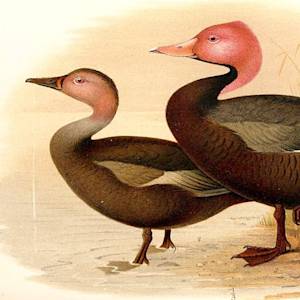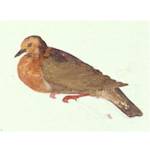Hawaii's most endangered bird
2023 CE • Hawaii
Before it was a paradise for people, Hawaii was a paradise for birds. Far from the mainland, birds ruled the roost for millions of years. The only mammals capable of making it to one of the world’s most isolated archipelago were bats and seals. With little competition and few predators, Hawaii’s songbirds evolved into a kaleidoscope of reds, yellows and greens, filling nearly every niche with beaks of all shapes and sizes. When people — first Polynesians, then Europeans — arrived, they didn’t come alone. A cavalcade of cattle, pigs and goats trampled and devoured native vegetation. Feral cats, rats and mongooses, meanwhile, ate unsuspecting ground-nesting birds. For songbirds in the trees, the biggest invasive threat was also the tiniest. Mosquitoes carrying avian malaria began killing the islands’ birds, which unlike their mainland counterparts have little natural defense to the disease. For a while, the threat was contained to low-lying areas. It seemed like the songbirds high in Hawaii’s forests were protected by the mountains’ mild climate . . . But soon, the bugs were swarming the biologists. Woods once filled with birdsong grew quiet. By 2012, it was clear the malaria-infected mosquitoes were getting to the ‘akikiki, with fewer than 500 left."
In 2023, a census found that only 5 'akikiki were left in the wild on Kauai, its native home.
Dino Grandoni, "A tiny Hawaiian bird was nearing extinction. Then the Maui fires came." The Washington Post, August 21, 2023.
Image: Carter Atkinson, USGS, Public domain, via Wikimedia Commons


Learn about Maya Lin’s fifth and final memorial: a multi-platform science based artwork that presents an ecological history of our world - past, present, and future.

Discover ecological histories and stories of former abundance, loss, and recovery on the map of memory.

Learn how we can reduce our emissions and protect and restore species and habitats – around the world.

See how art can help us rethink the problems we face, and give us hope that each one of us can make a difference.

Help make a global memorial something personal and close to home. Share your stories of the natural world.


